The night sky has always captivated the human imagination, and one of the most prominent and recognizable constellations is Orion. With its distinctive shape and shining stars, Orion has been a source of wonder and fascination for thousands of years. But where did this constellation originate from, and what is its meaning? In this article, we will delve into the mythology, formation, and symbolism of Orion, exploring its cultural significance and modern interpretations. Join us on this cosmic journey as we unravel the mysteries of the Orion constellation.
Contents
- The Mythology of Orion
- Formation and Location
- Star Composition
- Symbolism and Cultural Significance
- Modern Observations and Interpretations
- Conclusion
-
Frequently Asked Questions
- 1. What is the significance of the Orion constellation in different cultures?
- 2. How can I locate the Orion constellation in the night sky?
- 3. Can I see the Orion constellation from both hemispheres?
- 4. Are there any notable features within the Orion constellation?
- 5. Is there any scientific evidence supporting the mythology of Orion?
- 6. What role does the Orion constellation play in astrology?
- 7. Can I observe the Orion constellation with the naked eye?
- 8. Are there any famous myths or stories related to Orion?
- 9. How far away is the Orion constellation from Earth?
- 10. Can I use the stars in the Orion constellation for navigation?
- References
-
Frequently Asked Questions
- 1. Can I see the Orion constellation from anywhere in the world?
- 2. How far away is the Orion constellation from Earth?
- 3. What are the main stars that make up the Orion constellation?
- 4. What is the significance of Orion’s Belt?
- 5. What other notable stars are found in the Orion constellation?
- 6. Did ancient civilizations have different interpretations of the Orion constellation?
- 7. How is the Orion constellation interpreted in astrology?
- 8. How has the Orion constellation influenced sacred geometry?
- 9. How has the Orion constellation been depicted in literature and art?
- 10. Can I observe the Orion constellation with the naked eye?
- References
- Read More
The Mythology of Orion
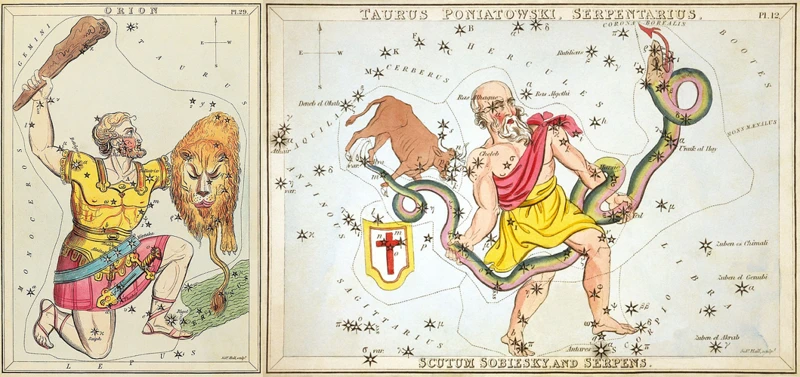
In the realm of mythology, the story of Orion is steeped in adventure and tragedy. According to Greek mythology, Orion was a great hunter, known for his immense strength and skill with a bow. He was the son of Poseidon, the god of the sea, and Euryale, one of the Gorgons. However, his true parentage is often disputed, with some versions claiming his father was Apollo, the sun god. Orion’s fame as a hunter reached the ears of the goddess Artemis, the virgin goddess of the hunt, who took a liking to him. The two became hunting companions, roaming the forests together. But their relationship angered Apollo, who was protective of his sister. In a fit of jealousy, Apollo tricked Artemis into shooting an arrow at a distant target, which turned out to be Orion. Distraught at the sight of her beloved companion lying dead, Artemis placed him among the stars, creating the constellation we now know as Orion. This tragic myth emphasizes the enduring bond between Orion and Artemis, and their undying presence in the night sky serves as a reminder of their eternal connection.
Formation and Location
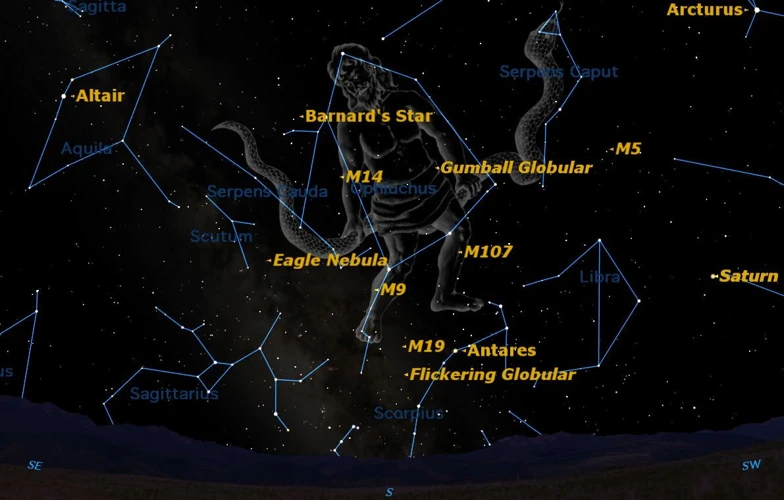
The Orion constellation, one of the most recognizable patterns in the night sky, is located on the celestial equator. It can be observed from various parts of the world, making it visible to different cultures throughout history. Orion is bordered by several other prominent constellations, including Taurus, Gemini, Canis Major, and Lepus. The formation of Orion involves a group of bright stars arranged in a distinctive pattern that resembles a hunter’s torso, with his belt as the central feature. The constellation is composed of several main stars, each with its own unique characteristics and significance. Additionally, Orion’s Belt, consisting of three bright stars in a straight line, is a notable feature that helps locate the constellation in the night sky. To find Orion, one can look for the three stars in the belt and trace a line downward to locate Sirius, the brightest star in the night sky, marking the head of Canis Major, the Great Dog constellation. The formation and location of Orion have fascinated astronomers and stargazers alike, providing a sense of wonder and guiding their observations of the celestial world.
Star Composition
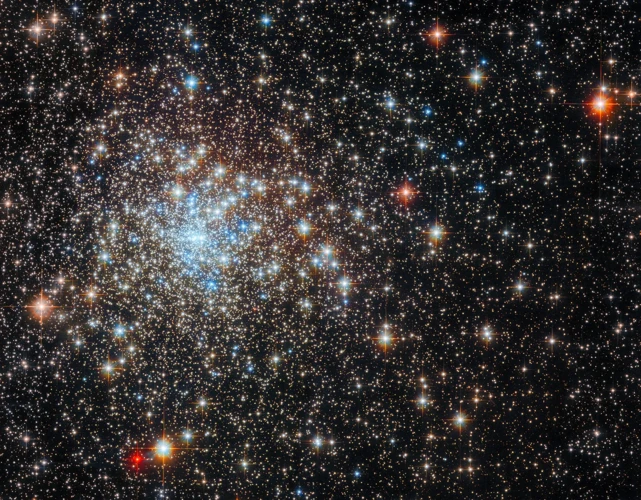
The star composition of the Orion constellation is a dazzling display of celestial bodies that come together to form its distinct shape. At the heart of Orion are several main stars that contribute to its brilliance and visibility. Betelgeuse, the red supergiant star, is one of the most prominent stars in the constellation and is well-known for its fiery hue. Rigel, another notable star, shines brightly as a blue supergiant, contrasting the warm tones of Betelgeuse. These stars, along with others like Bellatrix and Saiph, form the iconic outline of Orion. One of the most intriguing features of the constellation is Orion’s Belt, a line of three stars that seem to form a straight line. These stars, known as Alnitak, Alnilam, and Mintaka, are not only visually striking but also serve as important reference points for astronomers. The star composition of Orion not only adds to its celestial beauty but also offers a glimpse into the vastness and diversity of the universe.
Main Stars
The Orion constellation is home to several notable stars that contribute to its recognizable shape. One of the most prominent stars in Orion is **Betelgeuse**, a red supergiant located at the upper left shoulder of the hunter. Its name is derived from the Arabic phrase “Bayt al-Jauzā,” which means “the House of the Twins.” Betelgeuse is one of the largest known stars in the universe and is nearing the end of its life, expected to explode in a supernova in the relatively near future. Another significant star in Orion is **Rigel**, located at the lower right foot. Rigel is a blue supergiant and is one of the brightest stars in the night sky. Its name is derived from the Arabic word “rijl,” which means “foot.” In addition to Betelgeuse and Rigel, other notable stars in Orion include **Bellatrix**, located at the left shoulder, and **Saiph**, found at the right knee. These stars, along with others in the constellation, contribute to the stunning celestial display of Orion, allowing stargazers to easily identify and appreciate its splendor.
Orion’s Belt
Orion’s Belt is one of the most recognizable features of the Orion constellation. Consisting of three bright stars in a straight line, this celestial trio has fascinated observers for centuries. The three stars that make up Orion’s Belt are Alnitak, Alnilam, and Mintaka. Alnitak, the easternmost star of the belt, is a massive and luminous blue supergiant. It is located approximately 800 light-years away from Earth. Alnilam, the middle star, is a blue supergiant as well, but it is even more massive and luminous than Alnitak. It is about 1,300 light-years away from our planet. Mintaka, the westernmost star, is a slightly fainter but still significant star in the belt. It is a multiple star system, consisting of three stars orbiting each other. Mintaka is situated around 900 light-years away. The alignment of these stars in a straight line is visually striking, and they serve as a navigational tool for astronomers to locate other celestial objects in the sky. When observing Orion’s Belt, it is difficult not to be captivated by its elegance and the mysterious tales linked to it in different cultures throughout history.
Other Notable Stars
Other than the main stars and Orion’s Belt, the Orion constellation is also home to several other notable stars that add to its celestial allure. One such star is Betelgeuse, a prominent reddish star located on Orion’s right shoulder. It is one of the largest known stars in the galaxy and serves as a beacon within the constellation. Another notable star is Rigel, situated at Orion’s left foot. Rigel is a blue-white supergiant and one of the brightest stars in the night sky. Its luminosity and distinct color make it a captivating sight. Additionally, there is Bellatrix, a blue giant star found on Orion’s left shoulder. Its name translates to “female warrior” in Latin, further enhancing the constellation’s mythology. These stars, along with other lesser-known ones within the Orion constellation, contribute to its celestial beauty and offer astronomers and stargazers a fascinating glimpse into the vastness and diversity of our universe.
Symbolism and Cultural Significance
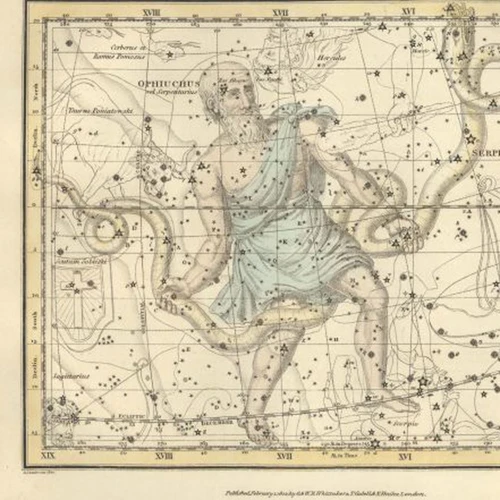
The Orion constellation holds great symbolism and cultural significance across various civilizations throughout history. In ancient Egypt, Orion was associated with Osiris, the god of the afterlife, rebirth, and fertility. The alignment of the pyramids of Giza is said to correspond with the three stars of Orion’s Belt, further emphasizing the importance of this constellation in Egyptian mythology and religious beliefs. In Greek mythology, Orion’s association with hunting and bravery made him a symbol of strength and valor. Many cultures around the world have incorporated Orion into their mythologies and folklore, attributing different meanings and interpretations to the constellation. For example, the Maasai people of East Africa view Orion as a spiritual guide and protector. Some astrologers also believe that the positioning of the stars in Orion has an influence on the personalities and characteristics of individuals born under its sign. Thus, the symbolism and cultural significance of Orion have transcended time and continue to captivate our collective imagination.
Ancient Civilizations
Ancient civilizations from around the world have long held the Orion constellation in high regard. In Egyptian mythology, Orion was associated with Osiris, the god of the afterlife and rebirth. The three stars that make up Orion’s belt were seen as the source of spiritual power and were connected to the pyramids of Giza, aligning with the layout of the pyramids themselves. The ancient Egyptians believed that Orion’s presence in the sky was a sign of divine protection and a guide for the souls of the deceased as they made their journey to the afterlife. Similarly, in Mayan culture, Orion was linked to the Maize God, a deity associated with fertility and growth. The alignment of the Orion constellation with significant celestial events, such as the solstices and equinoxes, played a crucial role in agricultural calendars and rituals. The Dogon people of Mali, West Africa, have a rich oral tradition that tells of their knowledge of the Sirius star system, which they claim was shared with them by advanced beings from the Sirius star cluster. The Dogon believe that their ancestral knowledge of Sirius and its companion star, Sirius B, is connected to the origins and significance of the Orion constellation. These ancient civilizations recognized the celestial significance of Orion and attributed deep cultural and spiritual meanings to its presence in the night sky.
Astrological Interpretations
Astrological interpretations of the Orion constellation have been varied and intriguing throughout history. In astrology, Orion is often associated with strength, courage, and determination. People born under the sign of Orion are believed to possess these qualities, making them natural leaders and warriors. The constellation’s position in the sky and its alignment with other celestial bodies also play a significant role in astrological readings. Some astrologers believe that Orion’s belt aligns with the zodiac sign Gemini, symbolizing a strong connection between these two cosmic entities. This alignment is said to enhance the communicative and adaptable qualities of individuals born under Gemini. Additionally, Orion’s placement near the constellation of Cygnus the Swan adds an element of creativity and grace to its astrological interpretations. The celestial dance between Orion and Cygnus signifies a harmonious balance between strength and elegance. Astrological interpretations of Orion offer a unique perspective on personality traits and life paths, connecting individuals to the vastness of the universe and the cosmic energies that influence their lives.
Modern Observations and Interpretations
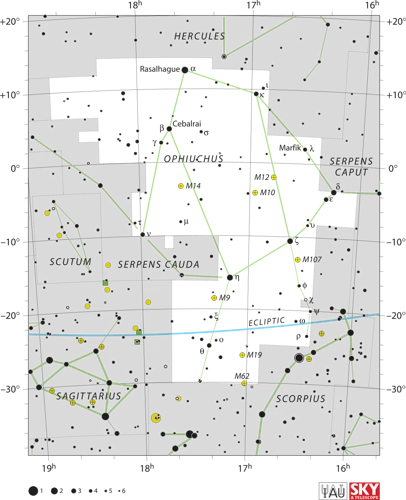
Modern observations and interpretations of the Orion constellation have expanded beyond its mythological origins. One intriguing aspect is the exploration of sacred geometry within Orion’s alignment. Researchers have discovered geometric patterns and alignments between the major stars of Orion. Some believe that these alignments hold deep symbolic and metaphysical meaning, suggesting a hidden code or universal harmony embedded in the celestial realm. Additionally, literature and art have been inspired by the striking visual presence of Orion. From novels and poems to paintings and sculptures, artists have been captivated by the constellation’s majestic aura and timeless allure. The symbolism of Orion continues to permeate various artistic expressions, depicting themes of strength, destiny, and the vastness of the cosmos. The modern understanding of Orion extends beyond mythology to encompass scientific curiosity, artistic creativity, and philosophical contemplation. It serves as a constant reminder of our connection to the universe and the mysteries that lie beyond our reach.
Sacred Geometry
Sacred geometry is an ancient concept that explores the interconnectedness of mathematical principles and their relationship with the natural world. When it comes to the Orion constellation, there are intriguing connections to sacred geometry. One notable example is the alignment of the three stars in Orion’s Belt, which form a nearly perfect straight line. This alignment has been associated with the concept of the “golden ratio,” a mathematical ratio widely regarded as aesthetically pleasing. The golden ratio is found in various natural phenomena and even in human-made structures, such as the Great Pyramid of Giza. The precise alignment of the stars in Orion’s Belt has evoked awe and wonder in astronomers and mathematicians alike, showcasing the harmonious relationship between the celestial and mathematical realms. Additionally, the positioning of Orion’s Belt in relation to other stars in the constellation creates geometric patterns, such as triangles and parallelograms. These geometric formations have sparked speculation about their significance and potential hidden meanings. While the true nature of these patterns may remain a mystery, the presence of sacred geometry within the Orion constellation adds another layer of fascination to its already enigmatic allure.
Literature and Art
Literature and art have long been inspired by the beauty and symbolism of the Orion constellation. In literature, Orion often represents strength, bravery, and perseverance. In Dante Alighieri’s “Divine Comedy,” Orion is mentioned as a constellation of heroes and warriors. The constellation also finds its way into the works of famous poets such as John Keats and Lord Byron, who use Orion as a metaphor for power and majesty. In art, Orion has been captured in various forms, from ancient cave paintings to Renaissance masterpieces. One noteworthy depiction is “The Hunt of Orion” by Nicolas Poussin, a 17th-century painting that portrays the mythical hunter in an epic battle with a ferocious beast. Another stunning representation can be found in Vincent van Gogh’s “Starry Night,” where Orion shines brightly amidst a swirling night sky. These artistic interpretations not only showcase the beauty of the constellation but also convey the timeless allure and fascination it holds for humanity. Whether through the written word or on canvas, Orion continues to inspire and ignite the imagination of artists and creatives across the world.
Conclusion

In conclusion, the Orion constellation holds a rich and captivating mythology that has fascinated people throughout history. Its origins can be traced back to Greek mythology, where the tragic tale of Orion and Artemis showcases the enduring bond between a hunter and a goddess. The formation and location of the constellation add to its allure, as it can be easily identified in the night sky. The composition of stars in Orion, including the notable Orion’s Belt, further emphasize its prominence. Symbolically, Orion has played a significant role in ancient civilizations and astrological interpretations, representing themes of strength, protection, and companionship. In modern times, the constellation continues to inspire artists, writers, and astronomers, with its presence in literature, art, and even sacred geometry. Exploring the mysteries and meanings of the Orion constellation allows us to connect with our ancestors and marvel at the wonders of the universe. So next time you gaze up at the night sky, take a moment to appreciate the beauty and significance of Orion, a celestial storyteller that has stood the test of time.
Frequently Asked Questions

1. What is the significance of the Orion constellation in different cultures?
The significance of the Orion constellation varies across different cultures. In Greek mythology, Orion was a renowned hunter, while in ancient Egyptian mythology, it was associated with Osiris, the god of the afterlife.
2. How can I locate the Orion constellation in the night sky?
Locating the Orion constellation is relatively easy. Look for three bright stars close together, forming Orion’s Belt. From there, you can spot Orion’s distinctive shape, including his shoulders, legs, and arms.
3. Can I see the Orion constellation from both hemispheres?
Yes, the Orion constellation is visible from both the northern and southern hemispheres. However, its position in the sky may vary depending on your location.
4. Are there any notable features within the Orion constellation?
Yes, within the Orion constellation, there are several notable features. The Orion Nebula, located in Orion’s Sword, is a stunning cosmic cloud of gas and dust, where new stars are born.
5. Is there any scientific evidence supporting the mythology of Orion?
While there is no direct scientific evidence supporting the mythology of Orion, the stories surrounding this constellation have influenced human culture, art, and symbolism for centuries.
6. What role does the Orion constellation play in astrology?
In astrology, the position of the Orion constellation is believed to have an influence on one’s personality traits, particularly for those born under the zodiac signs influenced by Orion, such as Gemini and Sagittarius.
7. Can I observe the Orion constellation with the naked eye?
Yes, the Orion constellation is easily visible to the naked eye, even in areas with moderate light pollution. However, using binoculars or a telescope can enhance your viewing experience and allow you to see more detail.
Apart from the Greek myth of Orion and Artemis, there are several other stories linked to Orion. In some Native American cultures, Orion represents a great hunter or a legendary figure.
9. How far away is the Orion constellation from Earth?
The distance between Earth and the Orion constellation is approximately 1,344 light-years. This means the light we see from Orion today actually traveled for 1,344 years before reaching our planet.
Absolutely! Historically, sailors and travelers have used the Orion constellation for navigation purposes. By observing the angle between Orion’s Belt and the horizon, they could determine their approximate latitude.
References
- Orion Constellation (the Hunter): Stars, Facts, Myth, Location
- Orion Constellation Stars, Belt & Mythology
Frequently Asked Questions

1. Can I see the Orion constellation from anywhere in the world?
Yes, the Orion constellation can be observed from virtually all parts of the world. Its location in the celestial equator makes it visible from both the northern and southern hemispheres.
2. How far away is the Orion constellation from Earth?
The distance between Earth and the Orion constellation is approximately 1,344 light-years. This means that the light we see from the constellation today actually originated over a thousand years ago.
3. What are the main stars that make up the Orion constellation?
The main stars in the Orion constellation are Betelgeuse, Rigel, Bellatrix, and Saiph. These bright stars form the recognizable shape of the constellation and serve as important navigation points in the night sky.
4. What is the significance of Orion’s Belt?
Orion’s Belt is a distinctive feature within the constellation composed of three bright stars: Alnitak, Alnilam, and Mintaka. It has been associated with various cultural interpretations and is often regarded as a celestial tool guiding travelers and hunters.
5. What other notable stars are found in the Orion constellation?
Aside from the main stars and Orion’s Belt, there are several other notable stars in the Orion constellation. These include Meissa, Betelgeuse, Bellatrix, Mintaka, and Saiph. Each star has its own unique characteristics and contributes to the overall beauty of the constellation.
6. Did ancient civilizations have different interpretations of the Orion constellation?
Absolutely! Ancient civilizations around the world, such as the Egyptians, Mayans, and Greeks, had their own myths and interpretations of the Orion constellation. Its prominence in the night sky made it an important celestial object in various cultural narratives.
7. How is the Orion constellation interpreted in astrology?
In astrology, the Orion constellation is associated with qualities such as strength, courage, and protection. It is often regarded as a symbol of a warrior or hunter, reflecting its mythological origins and the characteristics associated with these archetypes.
8. How has the Orion constellation influenced sacred geometry?
The arrangement of stars within the Orion constellation has inspired many geometric patterns and ratios in sacred geometry. Its alignment with other significant celestial objects, such as the Great Pyramids of Giza, has led to theories about ancient cultures incorporating these cosmic relationships into their architectural designs.
9. How has the Orion constellation been depicted in literature and art?
The Orion constellation has captured the imagination of writers and artists throughout history. It has been featured in various literary works, such as Dante’s “Divine Comedy,” and has served as a subject for countless paintings, sculptures, and other forms of artistic expression.
10. Can I observe the Orion constellation with the naked eye?
Absolutely! The Orion constellation is one of the most easily recognizable and visible constellations in the night sky. On a clear night, away from city lights, you can observe its prominent stars and shape without the need for telescopes or binoculars.







